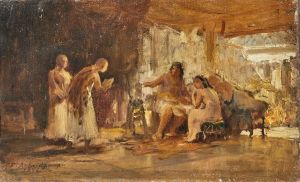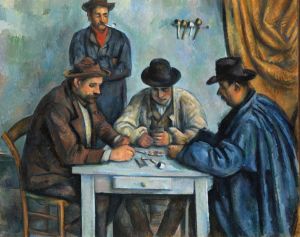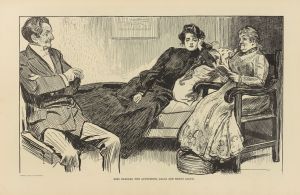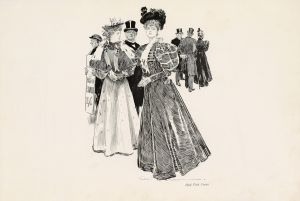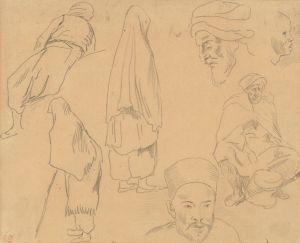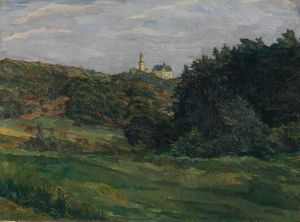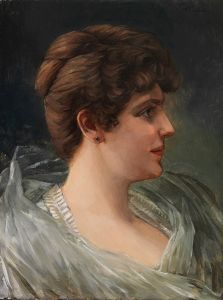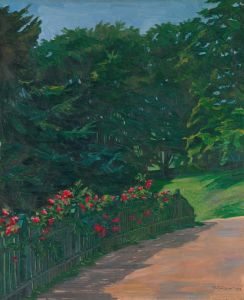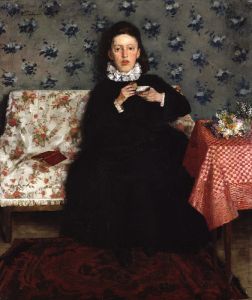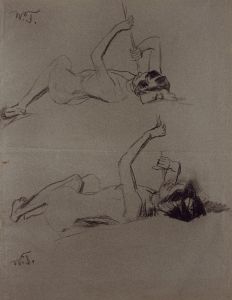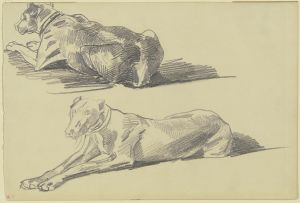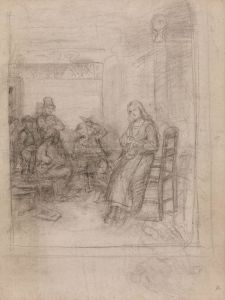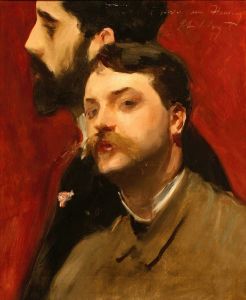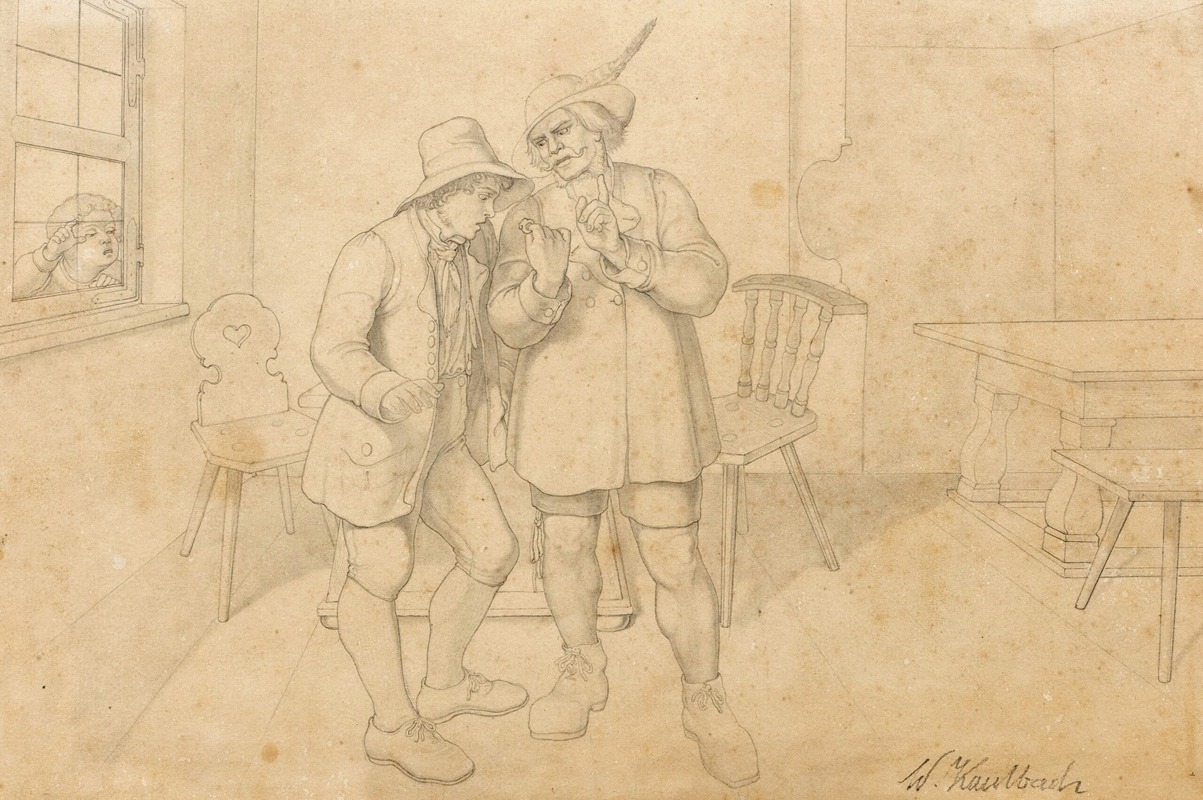
In der Wirtsstube
A hand-painted replica of Wilhelm Trübner’s masterpiece In der Wirtsstube, meticulously crafted by professional artists to capture the true essence of the original. Each piece is created with museum-quality canvas and rare mineral pigments, carefully painted by experienced artists with delicate brushstrokes and rich, layered colors to perfectly recreate the texture of the original artwork. Unlike machine-printed reproductions, this hand-painted version brings the painting to life, infused with the artist’s emotions and skill in every stroke. Whether for personal collection or home decoration, it instantly elevates the artistic atmosphere of any space.
Wilhelm Trübner's painting "In der Wirtsstube" is an exemplary work of German realism from the late 19th century. Trübner, born in 1851 in Heidelberg, Germany, was a prominent figure in the German art scene, known for his contributions to the realist movement. He was associated with the circle of artists around Wilhelm Leibl, a group that emphasized a truthful representation of everyday life, often focusing on the mundane and the ordinary with meticulous attention to detail.
"In der Wirtsstube," which translates to "In the Tavern" or "In the Public House," is a painting that captures a scene typical of Trübner's interest in everyday settings. The painting depicts an interior of a tavern, a common social setting in 19th-century Germany, where people from various walks of life would gather. Trübner's work is characterized by its detailed and realistic portrayal of the environment and the people within it, capturing the essence of the social interactions and the atmosphere of the time.
The composition of "In der Wirtsstube" is notable for its use of light and shadow, which Trübner skillfully employs to create depth and to draw attention to specific elements within the scene. The figures in the painting are rendered with a high degree of realism, showcasing Trübner's keen observational skills and his ability to convey the subtleties of human expression and gesture. The attention to detail extends to the objects and furnishings within the tavern, which are depicted with a precision that adds to the authenticity of the scene.
Trübner's technique reflects the influence of the Dutch masters, particularly in his use of color and light. His palette is often subdued, with earthy tones that enhance the realism of the scene and contribute to the overall mood of the painting. This approach aligns with the broader realist movement, which sought to depict subjects as they were, without idealization or romantic embellishment.
"In der Wirtsstube" is a testament to Trübner's skill as a realist painter and his ability to capture the essence of everyday life in 19th-century Germany. The painting not only serves as a visual document of the period but also offers insight into the social dynamics and cultural settings of the time. Trübner's work, including this painting, is an important part of the German realist tradition, and it continues to be studied and appreciated for its artistic and historical significance.
Wilhelm Trübner's contributions to art extend beyond his paintings; he was also a teacher and an influential figure in the art community. His works are held in various collections and continue to be exhibited, reflecting his enduring impact on the art world. "In der Wirtsstube" remains a significant piece within his oeuvre, exemplifying his mastery of realism and his dedication to portraying the world with honesty and precision.





